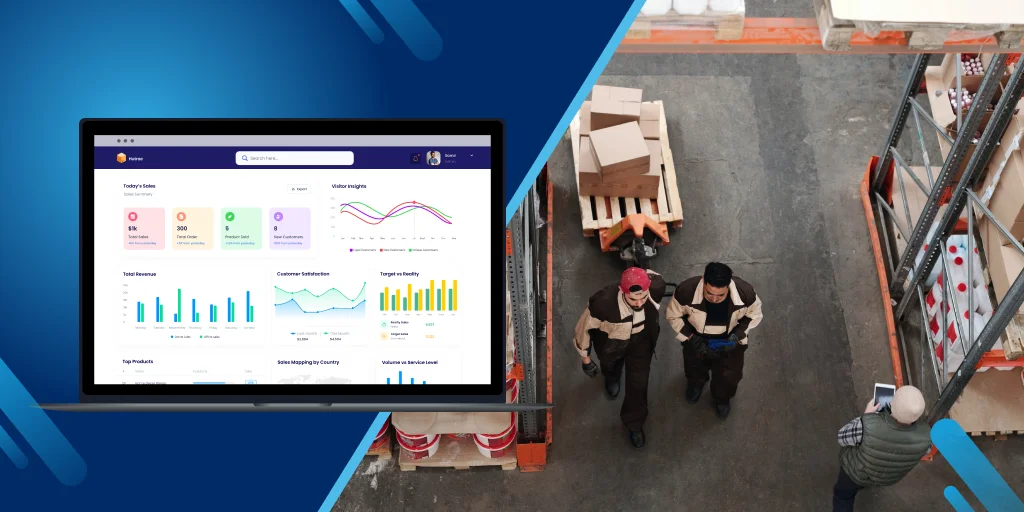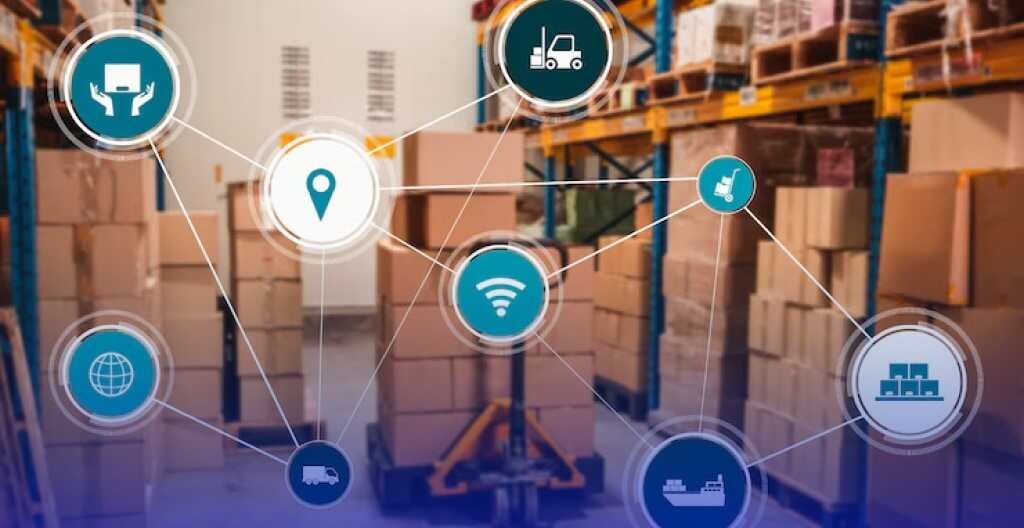For a business to thrive in today’s competitive landscape across various industries, it must excel in multiple facets. Particularly in the dynamic realms of e-commerce and logistics, the significance of efficient delivery management cannot be overstated. Timely delivery stands as a pivotal factor influencing the success of any venture. Consequently, enterprises are progressively adopting end-to-end delivery management software and applications to streamline their logistics processes.
Nevertheless, before delving into such endeavours, a thorough comprehension of the associated cost implications is essential. In this article, we will delve into the various factors that influence the cost of developing end-to-end delivery management software or apps.
Table of Content
Understanding the Scope of End-to-End Delivery Management Software
What is End-to-End Delivery Management Software?
End-to-end delivery management software is a comprehensive solution that covers the entire logistics process, from order placement to final delivery. It typically includes features such as order tracking, route optimization, inventory management, and real-time communication.
Importance of End-to-End Delivery Management:
End-to-end delivery management is pivotal for efficient transportation. Let’s delve into its significance and key features:
- Enhanced Customer Experience: Providing a seamless and transparent delivery experience is essential for customer satisfaction. End-to-end delivery management allows customers to track their orders in real time, receive accurate delivery estimates, and communicate with delivery personnel if needed. Establishing transparency cultivates trust and loyalty among customers.
- Operational Efficiency: Efficient delivery management streamlines the entire logistics process, from order processing to final delivery. By optimizing routes, managing inventory effectively, and minimizing delays, businesses can reduce operational costs and improve overall efficiency.
- Inventory Management: End-to-end delivery management software helps businesses keep track of their inventory in real time. This ensures that the right products are available for delivery when needed, minimizing stockouts and overstock situations. Accurate inventory management also improves order fulfilment and reduces the risk of errors.
- Route Optimization: Route optimization is a key feature of delivery management software. By analyzing factors such as distance, traffic patterns, and delivery windows, businesses can optimize delivery routes to minimize fuel costs, reduce delivery times, and improve overall productivity.
- Real-time Tracking: Real-time tracking allows businesses and customers to monitor the status and location of deliveries in real time. This visibility enables proactive communication and allows businesses to respond quickly to any issues or delays that may arise during the delivery process.
- Communication Tools: Effective communication tools, such as SMS alerts, email notifications, and in-app messaging, facilitate communication between delivery personnel, customers, and businesses. Clear and timely communication helps manage expectations, resolve issues promptly, and enhance the overall delivery experience.
- Analytics and Reporting: End-to-end delivery management software provides valuable insights through analytics and reporting tools. Businesses can analyze delivery performance, track key metrics such as delivery times and customer satisfaction, and identify areas for improvement. These insights enable data-driven decision-making and continuous optimization of delivery operations.
- Scalability and Flexibility: As businesses grow and evolve, end-to-end delivery management software should be scalable and flexible enough to adapt to changing needs and requirements. Whether expanding into new markets, adding new delivery channels, or integrating with third-party systems, scalable delivery management solutions provide the flexibility needed to support business growth.
Efficient end-to-end delivery management is crucial for meeting customer expectations and staying competitive. Leveraging advanced software enhances operational efficiency, satisfaction, and business growth.

Costs for Developing an End-to-End Delivery Management Software/App:
Based on research by Zoho, app development costs significantly affect both the development approach and the quality of the final product. The cost to develop end-to-end Delivery Management Software varies based on specific requirements, features, and complexities. Understanding these factors is crucial for businesses integrating web or mobile applications into their digital strategies, as apps enhance customer experience, boost revenue, and increase retention rates.
- Features and Functionality:
- The scope and complexity of features play a significant role in determining the cost. Basic features such as order processing, real-time tracking, and route optimization are essential but may cost less.
- Advanced features like predictive analytics, integration with third-party APIs, AI-driven optimization, and comprehensive reporting tools contribute to increased development costs.
- Platform (Web or Mobile):
- Developing a web-based platform, a mobile app, or a combination of both affects the cost. Mobile apps typically involve higher development costs due to the need for compatibility across various devices and operating systems.
- Choosing a responsive web design that adapts to different screen sizes can be a cost-effective alternative to native mobile app development.
- User Interface and Experience (UI/UX):
- A well-designed and intuitive UI/UX is crucial for user adoption and satisfaction. Investing in a user-friendly interface may increase development costs, but it pays off in improved user engagement.
- UI/UX design includes wireframing, prototyping, and testing processes, which contribute to the overall cost.
- Integration Requirements:
- The level of integration with existing systems, such as ERP, CRM, and third-party APIs, influences the cost. Seamless integration ensures smooth data flow across the organization.
- Custom integrations may require additional development efforts, impacting both time and cost.
- Development Team:
- The cost of hiring a development team, including project managers, developers, UI/UX designers, and quality assurance professionals, is a significant part of the overall expenditure.
- The team’s location, expertise, and experience level can influence hourly rates, affecting the total development cost.
- Technology Stack:
- The choice of technology stack, including license’s, frameworks, and tools, impacts both initial and ongoing costs. Open-source solutions may save initial costs, but ongoing support and customization could add to expenses.
- Testing and Quality Assurance:
- Ensuring the reliability and security of the software involves costs related to manual and automated testing, security audits, and quality assurance processes.
- Cutting corners in testing can lead to issues post-launch, potentially increasing costs for bug fixes and updates.
- Maintenance and Updates:
- Post-launch, ongoing maintenance and updates are essential for keeping the software running smoothly. Maintenance costs include bug fixes, security patches, and adapting the software to evolving business needs.
- Regulatory Compliance:
- Compliance with industry regulations and standards may add to the development cost. Ensuring that the software meets legal requirements in different regions is essential for long-term success.
Conduct a thorough analysis considering business needs, plan carefully, and prioritize features based on requirements for effective development and cost management. Collaborate with an experienced team and anticipate long-term maintenance needs for success.
Strategies to Optimize Costs for Developing an End-to-End Delivery Management Software/App
Developing end-to-end delivery management software/app can be costly, but strategies like using Integrated Logistics solutions help optimize expenses by streamlining supply chain processes. Additional cost-saving measures include adopting cloud-based technologies, scalable frameworks, and focusing on essential features, with less critical functions added later.
- Minimum Viable Product (MVP) Development: Start with a Minimum Viable Product that includes only the essential features needed for the basic functionality of your delivery management software. This approach allows for a quicker development and launch, enabling you to gather user feedback and prioritize future feature enhancements based on actual needs.
- Agile Development Methodology: Embrace an agile development methodology, dividing the project into smaller, more manageable sprints. This allows for continuous testing, feedback, and adjustment, reducing the risk of costly rework later in the development process. Agile also facilitates flexibility in adapting to changing requirements.
- Open-Source Technologies: Leverage open-source technologies and frameworks to reduce licensing costs. Open-source solutions can provide a solid foundation for development, but it’s crucial to consider the long-term maintenance and support requirements associated with these technologies.
- Cloud Services:Utilize cloud services to avoid substantial upfront infrastructure costs. Cloud platforms offer scalable and cost-effective solutions, allowing you to pay for resources as needed. This is how the requirement for significant upfront investments in hardware and infrastructure is eradicated.
- Lean Development Principles: Apply lean development principles to eliminate waste and optimize processes. Continuous improvement and the elimination of unnecessary steps in the development lifecycle can contribute to cost savings. Regularly assess and refine development processes for efficiency.
- Quality Assurance Automation: Invest in automated testing tools to reduce manual testing efforts and improve the efficiency of quality assurance processes. Automated testing helps catch bugs early in the development cycle, preventing costly post-launch issues.
Summing Up!
The creation of end-to-end delivery management software or applications necessitates a comprehensive approach that takes into account various considerations, including features, platform selection, integration requirements, and geographical reach. Costs related to development, upkeep, and updates must be meticulously budgeted to ensure the viability and success of the solution. Despite the initial investment appearing substantial, the advantages of streamlined logistics, enhanced customer satisfaction, and operational efficiency often surpass the initial expenses.
However, merely having a concept is insufficient for market competitiveness. Engaging with a mobile app development firm like Hutech is crucial, as they facilitate the conceptualisation, design, and delivery of tailored solutions for your business, enabling you to maintain a robust presence in this fiercely competitive market.
Frequently Asked Questions
1) Can I develop a delivery management app on a limited budget?
Yes, developing a Minimum Viable Product (MVP) with essential features and utilizing cost-effective development strategies can help you launch a delivery management app on a limited budget.
2) How long does it take to develop end-to-end delivery management software?
The development time depends on factors such as the complexity of features, technology stack, and team expertise. On average, it may take several months to a year to develop a fully functional delivery management software.
3) Is it better to develop a mobile app or a web-based platform for delivery management?
The choice between a mobile app and a web-based platform depends on your target audience and business goals. While a mobile app enhances user experience and accessibility, a web-based platform may be more cost-effective for certain scenarios.
4) How can I ensure the security of my delivery management software?
Ensuring the security of your software involves regular security audits, implementing encryption measures, and staying updated on the latest security practices. It’s essential to prioritize security to protect sensitive information and maintain trust with users.
Ready to Advance your Digital Transformation?Get in touch with us.
Discover why Hutech is the right partner for your business.
MAIL US AT
sales@hutechsolutions.com
CONTACT NUMBER
+91 90351 80487
CHAT VIA WHATSAPP
+91 90351 80487
Humantech Solutions India Pvt. Ltd 163, 1st Floor, 9th Main Rd, Sector 6, HSR Layout, Bengaluru, Karnataka 560102

